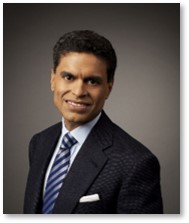In her Wall Street Journal column on Saturday, “What Universities Have Done to Themselves,” Peggy Noonan quoted Fareed Zakaria on the issue of DEI in colleges and universities. In the opening of his Dec. 10 show, Mr. Zakaria said the following:
“In the humanities, hiring for new academic positions now appears to center on the race and gender of the applicant, as well as the subject matter, which needs to be about marginalized groups.”
Qualified by Race and Gender
What drew my attention was the word “now.” Are you kidding me?
Mr. Zakaria may be excused for his ignorance because he is young, (born in 1964). He did not live through the fifties and sixties in the United States because he came to America from India in 1984, to attend Yale University.
But both Ms. Noonan (born in 1950) and I remember what hiring was like in the United States back then—whether in academia, the professions, or business.
The race and gender of a job applicant were central because the good jobs, the well-paying jobs, the jobs that led to a career, went only to white men. Specifically, that meant straight white Christian men (SWCM). A gentleman’s agreement might allow a specific number of Jewish men to work at a company, but Blacks, Asians and women of any nationality need not apply. The only difference: it didn’t take the form of a policy, just an “understanding.”
Common Knowledge and Closed Circles
The SWCM who ran America took it as fact that women lacked the intellect for the professions, couldn’t handle scientific rigor, weren’t tough enough for the business world, or too delicate for an operating room. That understanding reserved all those choice jobs for other straight, white, Christian men even though such favored males might have been less qualified.
 Many plum positions went to college roommates, fraternity brothers, fellow eating-club members, or the sons of one’s father’s friends. They stayed inside a closed circle and were never advertised or open to anyone outside it. Meanwhile, classified job ads were divided into “Help Wanted – Men” and “Help Wanted – Women.” You can guess which jobs were available to the latter.
Many plum positions went to college roommates, fraternity brothers, fellow eating-club members, or the sons of one’s father’s friends. They stayed inside a closed circle and were never advertised or open to anyone outside it. Meanwhile, classified job ads were divided into “Help Wanted – Men” and “Help Wanted – Women.” You can guess which jobs were available to the latter.
America worked this way back then as a matter of course. The SWCM may not have thought much about how they reserved the best for themselves; they just accepted it as the norm and took advantage of it. Does anyone think that all the white Hall of Fame baseball players prior to 1947 would have made it to Cooperstown had they competed with the likes of Satchell Paige, Cool Papa Bell, Josh Gibson or Buck Leonard?
Race and Gender in the Past
Mr. Zakaria went on to say:
“A white man studying the American presidency does not have a prayer of getting tenure at a major history department in America today.”
I have a newsflash for Mr. Zakaria: Back then, a woman’s chances of becoming a professor, much less tenured, were slim to none.
 If you don’t understand this, you probably never lived in this world because you were born after the Women’s Movement forced some change.
If you don’t understand this, you probably never lived in this world because you were born after the Women’s Movement forced some change.
To see how it worked, I suggest that you watch the first season of “Mad Men” or the excellent Apple+ series “Lessons in Chemistry” for a tutorial on how straight white Christian men treated women in the fifties and sixties.
If you think those shows exaggerated, they did not. If anything, they soft-pedaled how men treated and hired (or not) women back then.
Discomfort for Losers
Things change and change always involves discomfort—especially on the part of those on the “losing” end. Thus, they see that policies designed to equalize opportunities now have focused on the race and gender of those who were left out back then. And they don’t like them.
But please don’t assume that, because these policies are new, basing hiring on race and gender is only happening now and didn’t occur before. It did. But it worked the other way and was just invisible to those who benefited from it.

